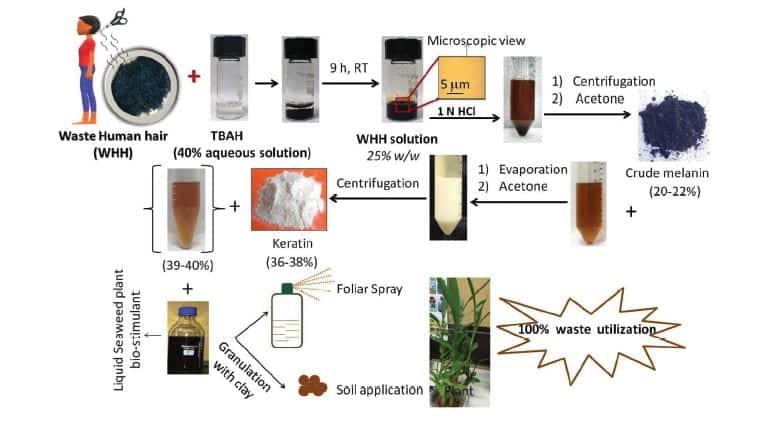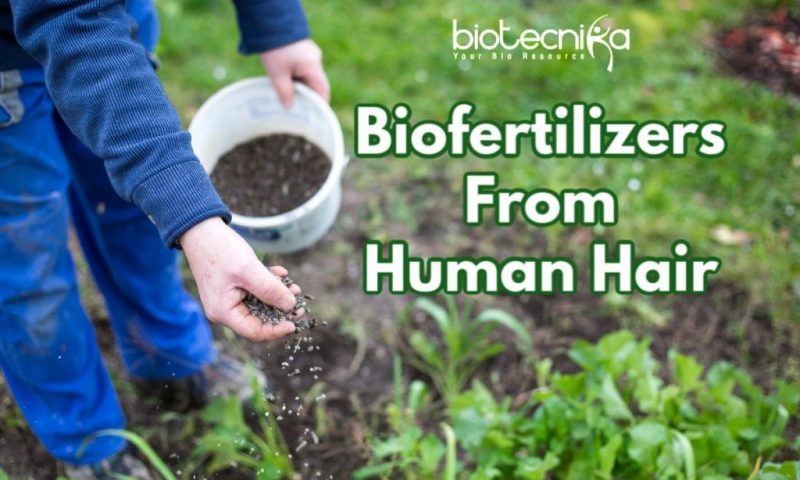Bio Fertilizer From Human Hair
Around 300,000 tons of human hair is treated and discarded as waste every year. Even though human hair is biodegradable, it poses a serious environmental problem as its accumulation in waste streams due to controlled disposal leads to clogging. In efforts of fixing this problem, the Central Salt and Marine Chemicals Research Institute (CSMCRI) scientists have come up with aa solution. They extracted biofertilizers from waste human hair through an integrated process they developed. Melanin and keratin were also isolated from it.
Keratin and melanin have high market value as keratin is sold at Rs 15000-20000 per kilogram while melanin is sold at around Rs 4000-5000 per gram, expensive than gold. Keratin is used in the cosmetic industry whereas melanin has been used for various cancer therapies.
To isolate keratin and melanin, they have used a hydrated ionic liquid. Human hair can be completely solubilized in this liquid. At room temperature, it is basically a 40 percent liquid salt and a 60 percent aqueous solution. Dr. Kamlesh Prasad, CSMCRI, Bhavnagar, Gujarat said, “This is different kind of salt that is liquid at normal room temperature as at room temperature, the common salt we use is solid. For solubilizing solids, this has been used.”

Human hair samples of 50 grams were taken for lab purposes. In a specialized solution, the hair was thoroughly washed to remove shampoo, dirt and oil traces. To dissolve human hair, it was stirred for nine hours in hydrated ionic liquid which left a black solution behind. Black melanin emerges as a precipitate when hydrochloric acid is added. After melanin is extracted, keratin can be extracted by adding acetone to the left-over solution. Dr. Prasad said, “Around 20-25% of waste human hair was completely solubilized by the hydrated ionic liquid. Keratin and melanin were isolated from the solution and it had 36-38% and 10-22% yield, respectively.”
The remaining waste liquid, subsequent to the extraction of melanin and keratin can be used as fertilizer, in the proportion of 50:50 with seaweed fertilizer. Dr. Prasad estimated that from 1 kilogram of human hair, we can get 300 milliliters of ionic liquid, which can be used as a fertilizer, and we get 360 grams of keratin and 200 grams of melanin.
Dr. Prasad said, “We extracted melanin which is in the crude form. It can be more valuable and expensive by being sulfur-free if we further refine it.”
India is a major human hair exporter. Human hair worth the US $2 billion was auctioned in the Tirumala temple alone during 2011-2012.
Dr. Prasad said that keratin from human hair may emerge as an alternative biomaterial for a number of applications considering the easy resourcing, abundance, biodegradability, favorable cellular interaction activity, immune-friendly nature upon transplantation, and excellent biocompatibility.

